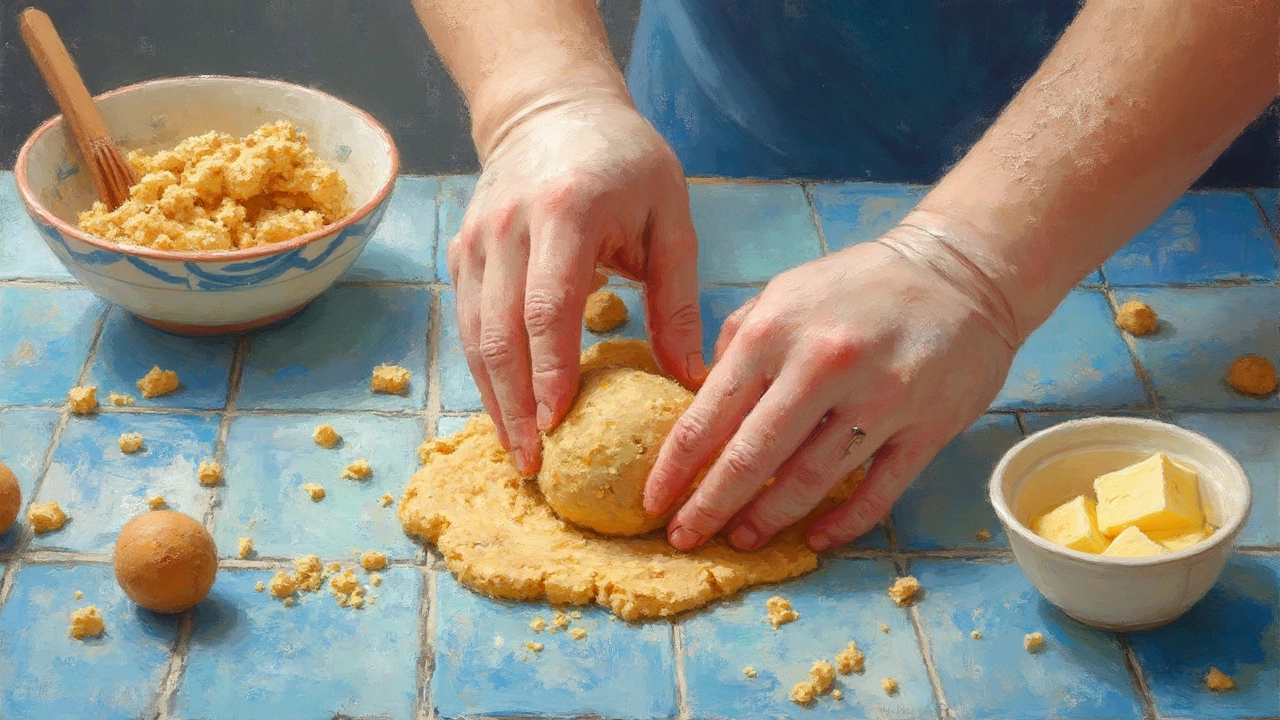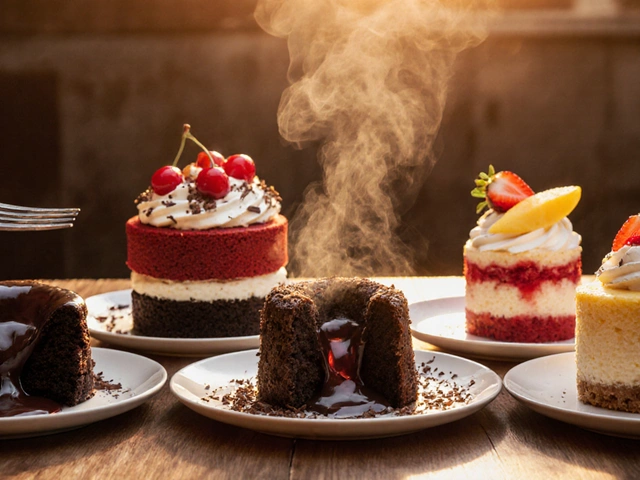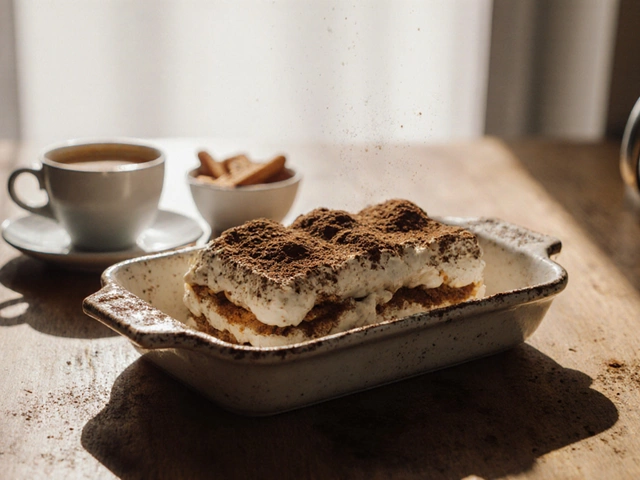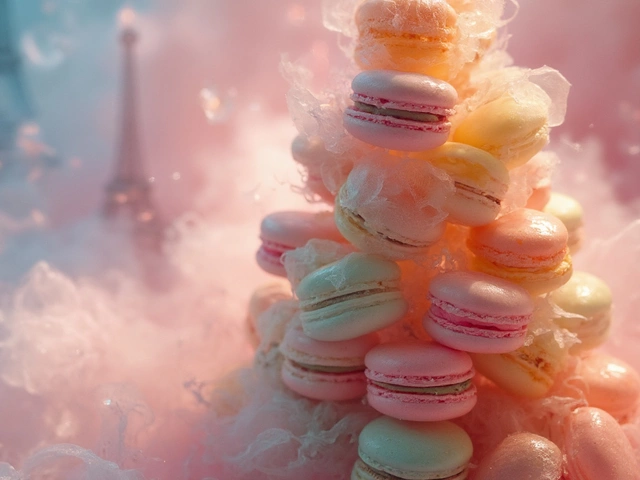There’s something irresistible about a soft cookie, right? When you bite into one, it feels like a warm hug for your taste buds. But what makes them so delightfully chewy? Let's dive into the world of cookie magic and uncover the secrets!
The secret to a soft cookie begins way before you even preheat the oven. Flour choices really set the stage. All-purpose is the go-to, but if you're after softness, try sneaking a little cake flour into the mix. It changes the protein content and makes a big difference.
Then there's sugar. Brown sugar, particularly, is a game-changer. It has molasses, which loves moisture. This keeps cookies softer longer. So if you're making cookies, consider swapping out some of the white sugar for brown. Your future self will thank you!
- Baking Basics: Ingredients Matter
- Mastering the Mix
- The Dough Chilling Trick
- Perfect Baking Time and Temperature
Baking Basics: Ingredients Matter
Getting the soft cookies of your dreams all boils down to the ingredients you choose. Let’s break it down ingredient by ingredient, so you know exactly what to grab on your next grocery run.
Flour Power
Your choice of flour can dramatically change the game. Most folks grab all-purpose flour without a second thought, but if you're seeking something extra soft, consider mixing in some cake flour. Why, you ask? Cake flour is lower in protein, which limits gluten formation, leading to a tender crumb. Maybe give a 50/50 blend a shot.
The Sweet Touch: Sugar Secrets
Sugar isn't just about sweetness; it directly affects texture. By using more brown sugar, you're introducing the magic of molasses, which boosts moisture retention. This means your cookies stay soft longer than those made with plain white sugar. Try a ratio of two parts brown to one part white for your next batch.
Butter vs. Margarine
When choosing fat sources, butter is celebrated for its flavor, but margarine or shortening can offer more chewiness. They have higher water content, which contributes to steam, and more steam means more soft, airy bites.
The Egg-citing Component
Eggs play a vital role in determining texture. Whole eggs provide structure, but for added softness, try using an extra yolk. Yolks are fatty and can produce an even richer cookie.
Optional Add-ins: Bonus Tips
- Vanilla Extract: Enhances flavor without altering moisture.
- Cornstarch: One tablespoon against two cups of flour can make cookies even softer.
Always keep in mind that balancing your dry and wet ingredients is key for homemade cookies that hit the mark. Each component interacts with the others, so small tweaks can lead to big wins. Armed with this knowledge, you're on your way to mastering the science of cookie baking!
Mastering the Mix
Merging the ingredients for a batch of soft cookies can feel like a dance. Each step contributes to that perfect texture.
The Creaming Method
This is where your journey to fluffiness begins. The creaming method involves beating softened butter and sugars until they blend into a light, airy mixture. Look for a pale color and fluffy texture, which usually takes about 2-3 minutes with a hand mixer.
Adding Eggs and Vanilla
Add the eggs one at a time. It might seem tedious, but this ensures they're fully incorporated. Vanilla comes next, and its aromatic addition is what gives cookies that enticing aroma. Be sure not to overbeat; just mix until combined.
Dry Ingredients and the Gentle Touch
Now, onto the dry ingredients. Stir together flour, baking soda, and salt in a separate bowl first. Gradually mix them into your wet ingredients. Remember, overmixing is a no-no. Mix until you see no streaks of flour and that's it. Want an insider tip? If your dough seems slightly dry, a tablespoon or two of milk can work wonders.
Mix-Ins: The Extra Fun
Let's face it, what’s a cookie without some chocolate chips or nuts? Gently fold these in with a spatula. This keeps the dough from becoming tough, ensuring that your cookies spread just right in the oven.
By following these steps, you're already halfway to cookie heaven.

The Dough Chilling Trick
Ever wondered why your favorite cookie recipe insists on chilling the dough? It’s not just an annoying step; it can be a game-changer for achieving the perfect soft cookies. Let's break down why this is crucial.
Why Chill Dough?
Chilling cookie dough helps to solidify the butter. When you bake, this means your cookies won't spread too much, resulting in a thicker, softer texture. This is especially important for homemade cookies where the butter-to-flour ratio can be tricky.
Moreover, cooling the dough allows the flour to fully hydrate, creating a more uniform bake and deepening the flavors. You'll notice a richer, more robust taste profile when you finally sink your teeth into that freshly baked cookie.
How Long to Chill?
Here’s the kicker: You should chill your dough for a minimum of 30 minutes, but if you can spare the time, let it rest up to 24 hours. Patience pays off in flavor and texture.
Pro-Tips for Chilling
- Wrap your dough in plastic wrap or store it in a covered bowl to prevent it from drying out.
- If you're short on time, shape the dough into balls before chilling. They’ll firm up quicker.
- Got a large batch? Split it into smaller portions. Smaller dough batches chill faster and evenly.
So, next time you’re tempted to skip the chilling step, remember that a little patience can transform your cookie experience from good to absolutely mouthwatering.
Perfect Baking Time and Temperature
Getting the baking time and temperature just right is crucial for soft cookies. Too long or too hot, and you might end up with crispy edges, which isn’t bad, but not what we're aiming for here. It’s all about finding that sweet spot.
Baking your cookies at a lower temperature, like 325°F (162°C), can be a secret weapon. At this temp, they bake more slowly, resulting in a chewier texture. This way, the edges won't harden too fast, keeping the center soft and gooey.
Timing Is Everything
The magic number for timing is often between 10 to 12 minutes. Don’t wait for them to look totally done when you pull them out of the oven. They continue to set as they cool, a little undercooked at first keeps them soft when they finish outside the oven.
For bigger cookies, feel free to give them an extra minute or two, but keep a close eye. It's better to slightly underdo than overdo with these goodies. Experiment and find what works best for your specific recipe and oven, as every oven can be a bit finicky!
Using the Right Baking Sheet
Baking is science, but it's also art. Using a light-colored baking sheet can be a game-changer. They conduct heat evenly, ensuring your cookies don’t over-bake on the bottom. If you have a dark-colored one, you might want to reduce the baking time by a couple of minutes to prevent over-browning.
Try to only bake one sheet at a time, positioned in the middle of the oven. If you're doubling up, rotate them halfway through for even baking.
Final Thoughts on Temperature
Interestingly, some bakers lower the oven temperature even further halfway through baking to ensure an even softer bite. Your first batch might be a test run, tweaking things until you hit cookie perfection. Remember, even small changes in baking temperature and time can make a big difference in achieving those delightful, chewy homemade cookies.





